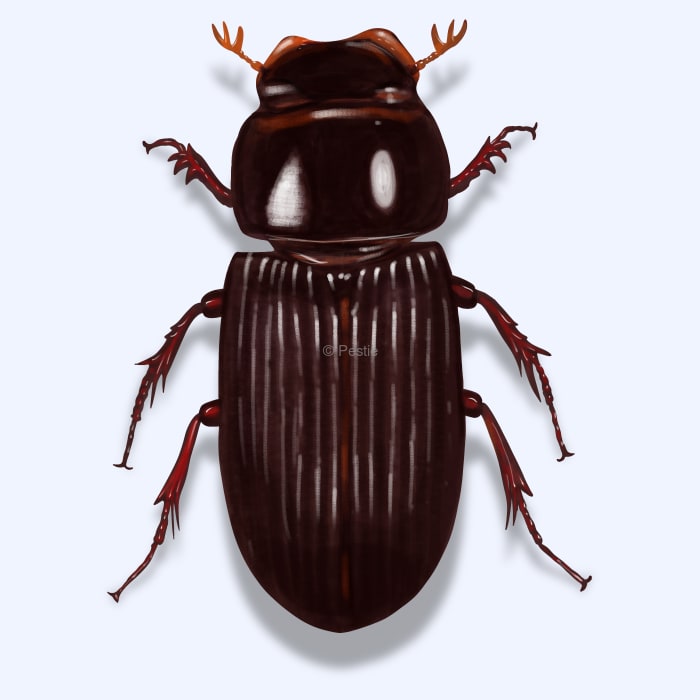How to identify and get rid of black turfgrass ataenius beetles

Root out the problem of black turfgrass ataenius beetles
If you’ve noticed patches of yellow or dying grass in your lawn, you might be dealing with black turfgrass ataenius. These small, shiny black beetles and their larvae, known as grubs, damage turfgrass by feeding on the roots, weakening the grass, and causing unsightly patches. Their impact on your lawn can be frustrating, especially if you take pride in maintaining a healthy, green yard.
Black turfgrass ataenius are particularly common in well-maintained lawns and golf courses, where their larvae feed on grass roots during the summer months. Their life cycle includes both adult beetles and larvae, but it’s the larvae that do the most damage.
How to identify black turfgrass ataenius beetles
Black turfgrass ataenius beetles can be identified by their small, shiny black or dark brown bodies and their slightly humpbacked appearance. They have distinct parallel grooves on their wing covers. The real problem comes from their larvae, which are small, white C-shaped grubs that feed on the roots of turfgrass, leading to yellowing patches and weakened grass. If you notice patches of yellow or dying grass in your lawn, especially during the summer months, you may have a black turfgrass ataenius infestation. You can confirm this by digging up a section of the affected turf and checking for white grubs in the soil beneath.
How big are black turfgrass ataenius beetles?
Adult black turfgrass ataenius beetles are about 1/8 inch long, while the larvae (grubs) can reach about 1/4 inch in length.
Where do black turfgrass ataenius beetles live?
These beetles are commonly found across the United States, particularly in areas with maintained turfgrass, such as golf courses, lawns, and sports fields. You’re most likely to find black turfgrass ataenius beetles and their larvae in your lawn, particularly in well-maintained turfgrass areas.
How to get rid of black turfgrass ataenius beetles
Fortunately, turfgrass can withstand some of the damage done by these beetles, but it does require best management practices and care.
You can manage a black turfgrass ataenius problem by:
- Aerating the soil: Improve soil drainage and aeration to reduce conditions favorable to the larvae. Healthy soil makes it harder for the grubs to thrive.
- Watering deeply and infrequently: Water your lawn deeply but less often to encourage deeper root growth, which makes your grass more resistant to damage from grubs.
- Removing thatch: Regularly dethatch your lawn to reduce the beetles’ preferred breeding and feeding areas.
One of the best ways to prevent black turfgrass ataenius beetles from coming into your home is by spraying and maintaining a bug barrier. With the Pestie Smart Pest Plan, you’ll get a pro-grade, DIY solution delivered right to your door so you can enjoy a pest-free home year-round.
Treat black turfgrass ataenius with Pestie
If you're still having trouble keeping black turfgrass ataenius away, the best option is to use a pro-grade, effective pest control solution like Pestie.
Pestie is a do-it-yourself pest control solution that's specially designed to keep black turfgrass ataenius and other pests away from your home.
With Pestie, you can rest easy knowing that your living space is protected and free of creepy crawlies. And the best part? It's designed for people, pets, and the planet, so you can say goodbye to harsh chemicals and hello to peace of mind!
- Save hundreds compared to traditional annual pest plans
- People, pet, and planet-friendly
- Pro-grade customized formulas
Quick facts
- Scientific name
Ataenius Spretulus
- Colors
Shiny black
- Life span
1 year
- Diet
Turfgrass roots
How dangerous are Black Turfgrass Ataenius?
Low danger risk
These beetles only damage turfgrass and won’t bite or sting.
Like most white grub damage, if the infestation is extensive, the turfgrass roots become unattached to the soil and can be lifted up. This is called the “carpet effect”.








